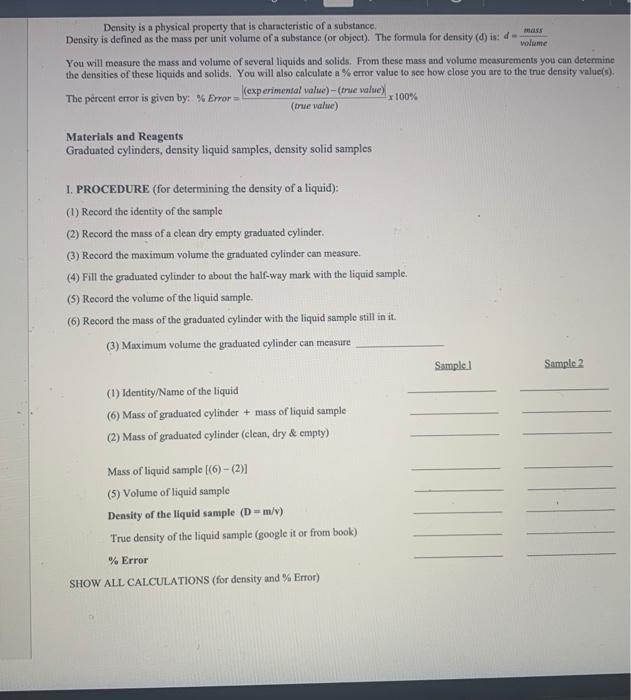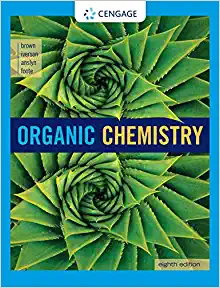Density is a physical property that is characteristic of a substance, Density is defined as the mass per unit volume of a substance (or object). The formula for density (d) is:d volume You will measure the mass and volume of several liquids and solids. From these mass and volume measurements you can determine the densities of these liquids and solids. You will also calculate a %error value to see how close you are to the true density Value(s) The percent error is given by: % Error experimental value) - (true value) 100% (true value) Materials and Reagents Graduated cylinders, density liquid samples, density solid samples I. PROCEDURE (for determining the density of a liquid): (1) Record the identity of the sample (2) Record the mass of a clean dry empty graduated cylinder. (3) Record the maximum volume the graduated cylinder can measure. (4) Fill the graduated cylinder to about the half-way mark with the liquid sample. (5) Record the volume of the liquid sample. (6) Record the mass of the graduated cylinder with the liquid sample still in it. (3) Maximum volume the graduated cylinder can measure Sample) Sample2 (1) Identity/Name of the liquid (6) Mass of graduated cylinder + mass of liquid sample (2) Mass of graduated cylinder (clean, dry & empty) Mass of liquid sample [(6)-(2)] (5) Volume of liquid sample Density of the liquid sample (D =m/v) Truc density of the liquid sample (google it or from book) % Error SHOW ALL CALCULATIONS (for density and % Error) Density is a physical property that is characteristic of a substance, Density is defined as the mass per unit volume of a substance (or object). The formula for density (d) is:d volume You will measure the mass and volume of several liquids and solids. From these mass and volume measurements you can determine the densities of these liquids and solids. You will also calculate a %error value to see how close you are to the true density Value(s) The percent error is given by: % Error experimental value) - (true value) 100% (true value) Materials and Reagents Graduated cylinders, density liquid samples, density solid samples I. PROCEDURE (for determining the density of a liquid): (1) Record the identity of the sample (2) Record the mass of a clean dry empty graduated cylinder. (3) Record the maximum volume the graduated cylinder can measure. (4) Fill the graduated cylinder to about the half-way mark with the liquid sample. (5) Record the volume of the liquid sample. (6) Record the mass of the graduated cylinder with the liquid sample still in it. (3) Maximum volume the graduated cylinder can measure Sample) Sample2 (1) Identity/Name of the liquid (6) Mass of graduated cylinder + mass of liquid sample (2) Mass of graduated cylinder (clean, dry & empty) Mass of liquid sample [(6)-(2)] (5) Volume of liquid sample Density of the liquid sample (D =m/v) Truc density of the liquid sample (google it or from book) % Error SHOW ALL CALCULATIONS (for density and % Error)







